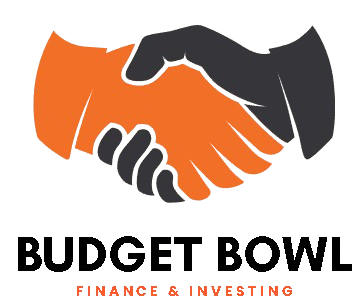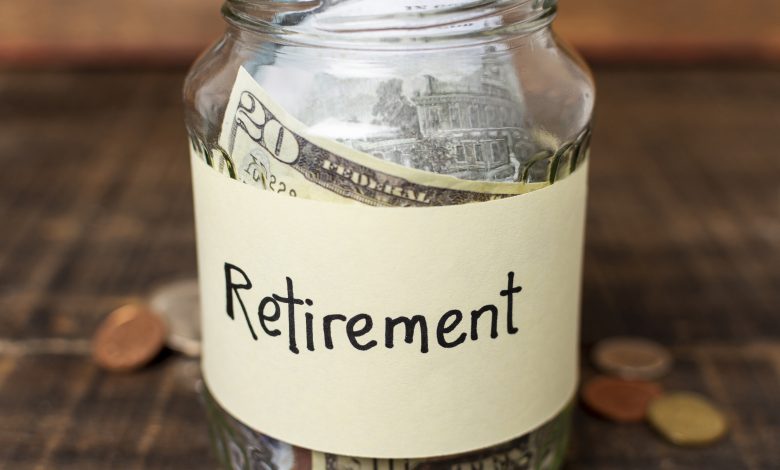Retirement planning isn’t the same as before.
My neighbor Tom, who’s 58, asked me, “With markets changing so fast, where should I put my money?”
After helping many people through retirement, I’ve seen what makes the difference between being prepared and feeling stressed.
This guide will show you:
-
The Best retirement investments for 2025’s challenges
-
How Sarah (a teacher) grew her savings by 22% last year
-
Why the old 60/40 investment strategy needs an update
We’ll keep it simple—no confusing terms, just clear, practical advice.
Whether you’re 35 or 65, knowing the Best retirement investments can help you retire with confidence instead of worry.
1. What are the Key Factors to Consider in Retirement Investments?
When my client Laura, a 42-year-old teacher, asked about the best retirement investments, we focused on three key things that make it work:
Risk Tolerance
Laura thought she wanted high growth—until the 2022 crash. When her portfolio dropped 15%, she panicked.
So, we adjusted her investments. Now she sleeps better with:
- 60% in stable index funds
- 30% in bonds
- 10% in growth stocks
Time Horizon
My friend James learned this lesson the hard way. At 55, he had 80% in stocks.
Then he lost his job and needed cash—right when his portfolio was down 20%. Ouch.
A good rule? Subtract your age from 110 to find the right stock percentage.
Diversification
The Miller family had all their 401k money in company stock.
Then their company merged, and boom—they lost 40% overnight.
Now they follow my simple 5-category rule:
- Domestic stocks
- International stocks
- Bonds
- Real estate (REITs)
- Cash equivalents
Whether you’re choosing between a 401k and an IRA or other options, these three factors matter way more than chasing hot trends.
My smartest clients check them once a year—it takes 30 minutes but saves them thousands.
2. How to Assess Your Current Financial Situation
Before choosing between a 401k vs IRA, you need a clear financial picture.
Here’s how my clients do it:
Listing Assets & Debts
My neighbor Lisa thought she was retirement-ready until we listed everything:
Assets:
- $300k 401k
- $40k IRA
- $200k home
Liabilities:
- $80k mortgage
- $12k car loan
This showed she actually had 22% less than she assumed.
Mapping Income & Expenses
A retired teacher I work with tracks:
- Pension: $3,200/month
- Social Security: $2,100/month
- Healthcare: $800/month
This revealed a $1,500/month gap to fill.
Smart Budgeting Tactics
The 50/30/20 rule works best for most:
- 50% needs (housing, food)
- 30% wants (travel, hobbies)
- 20% savings
One couple found they were spending 65% on needs—we adjusted their 401k vs IRA contributions accordingly.
Why This Matters
You wouldn’t build a house without measurements. Don’t plan retirement without this foundation.
Choosing the Best retirement investments ensures long-term security and financial stability.
3. What Investment Vehicles are Recommended for 2025?
The investment game is changing, and your strategy should too.
Here’s what’s working for my clients right now:
Stocks & Equity Funds
- Mark (42) puts 60% into low-cost index funds.
- His sister Emily prefers dividend stocks for steady income.
- Both use dollar-cost averaging to lower risk.
Bonds & Fixed Income
With interest rates possibly peaking, here’s what I’m seeing:
- Short-term Treasuries (3-6 months) paying 5%+
- Municipal bonds for people in high-tax states
- Laddered CDs for steady cash flow
My retired neighbor Barbara uses this mix for her “safe money” bucket.
REITs (Real Estate Investment Trusts)
Commercial REITs are risky right now, but:
- Healthcare/senior housing REITs look promising.
- Data center REITs are growing thanks to AI.
- Office space REITs? Still struggling—best to avoid.
A couple in Phoenix makes $1,800/month just from their REIT portfolio!
The 401k vs IRA Factor
Where you invest matters as much as what you invest in:
- Stocks? Best in Roth accounts (tax-free growth).
- Bonds? Better in traditional accounts (tax deferral).
Make sure you’re putting your money in the right place!
4. How to Incorporate Alternative Investments into Your Portfolio
When my client retired last year, his portfolio was 90% stocks and bonds.
After helping him diversify, he now sleeps better knowing 25% of his assets are in alternatives.
Here’s what works in today’s market:
Commodities & Precious Metals
- Gold/Silver – 5-10% of your portfolio works best (like my neighbor Lisa’s setup).
- Oil/Agriculture – Good for inflation hedging but can be volatile.
- Pro Tip – Use ETFs instead of physical metals for easier management.
Cryptocurrencies & Digital Assets
- Keep it 1-3% max (this helped protect one of my client during the 2022 crash).
- Best to stick to Bitcoin & Ethereum if you’re new.
- Never use emergency funds for crypto.
Private Equity & Venture Capital
- Usually requires $50k+ minimum investment.
- Best for younger investors with a long-term view.
- My college friend Mike doubled his money in 5 years, but it was locked up.
Remember: Alternatives should complement your 401k or IRA, not replace them.
Start small – even 5% diversification can lower your risk a lot!
When planning for your future, considering the Best retirement investments can help you achieve financial security and peace of mind.
5. What Role Does Tax-Advantaged Accounts Play?
When my client Alex, 42, asked how to boost his retirement savings, we started with tax-advantaged accounts. Here’s what works:
401k vs IRA: The Power Combo
David, an engineer, maxes his 401k to get the $7,500 employer match.
His wife, Sophia, adds $7,000 to her IRA every year.
Together, they save $4,200/year in taxes while growing their wealth.
Why Roth Options Shine
- Tax-free growth—Mia’s Roth IRA gained $18,000 tax-free last year.
- No required minimum distributions.
- Withdraw contributions anytime.
Contribution Strategies That Work
- Ethan increases his 401k contribution by 1% every January.
- The Martinez family funds their IRAs in January, not December—gaining seven extra months of growth.
- Chloe does backdoor Roth conversions since she earns too much for a direct Roth.
If you’re looking for best retirement investments, these strategies can help maximize your savings and minimize taxes.
6. How to Stay Informed on Market Trends and Economic Indicators
When my client Maria nearly missed a major shift in the bond market last year, it cost her retirement portfolio $12,000.
That’s when I came up with my simple “Market Monitoring System” that anyone can use:
Continuous Education That Actually Works
- Free webinars from FINRA (3/month)
- Local university extension courses ($99)
- My barber Greg learns about the markets through financial podcasts during his commute.
Reliable Sources I Personally Use For beginners:
- Morningstar’s free weekly newsletter
- The Wall Street Journal’s “Markets” section
- Federal Reserve economic updates
For serious investors:
- Bloomberg Terminal (expensive but worth it)
- S&P Global Market Intelligence
When to Bring In Professionals
I recommend advisors for:
- Annual portfolio checkups ($300 – $500)
- Major life changes (inheritance, job loss)
- Tax law shifts
My neighbor Ray consults his CFP quarterly – it’s helped him avoid 3 bad decisions during market swings.
Pro Tip: Set Google Alerts for “SEC updates” + “Federal Reserve meetings.” This free trick saved another client from panic-selling during a temporary dip.
Remember: You don’t need to watch markets every day. Just 30 focused minutes each week keeps you informed.
7. What are the Risks Associated with Retirement Investments?
Best retirement investments isn’t just about making money—it’s also about managing the risks that can mess up even the best retirement investments plans. Here’s what I’ve learned from years of experience and helping many clients:
Market Volatility
One of my client lost 30% of his portfolio in 2022. But because he:
- Stayed diversified across different asset classes
- Had 2 years of cash reserves
- Didn’t panic-sell
His investments bounced back within 18 months. Volatility is only dangerous when you have to sell during a downturn.
Inflation’s Silent Threat
Sarah, a retired nurse, saw her $4,000 monthly income lose 15% of its buying power in just 3 years. We fixed this by:
- Adding inflation-protected securities (TIPS)
- Including dividend-growing stocks
- Keeping 20% in real assets like REITs
Longevity Risk
The biggest surprise risk? Running out of money. My uncle Bob retired at 65 thinking he’d live to 85. At 91, he’s had to cut back on his spending.
Now I tell clients to plan for at least 95+ by:
- Using conservative withdrawal rates (3-4%)
- Thinking about annuities for steady income
- Keeping growth investments even in retirement
The choice between a 401k and an IRA matters less than how you handle these three risks. Smart investors don’t avoid risk—they plan for it.
8. How to Adjust Your Investment Strategy as You Approach Retirement
As retirement gets closer, the focus of Best retirement investments should shift from growth to stability.
A lot of people nearing retirement make the mistake of being either too aggressive or too cautious. After working with many clients in this phase, I’ve found three key adjustments that really help:
Asset Allocation Shifts
In the 5-10 years before retirement, it’s best to gradually reduce your exposure to stocks from 80% to around 40-60%. One client did this by moving 5% each year from stocks to bonds, which helped them avoid big losses during market dips but still allowed for growth.
Portfolio Rebalancing
Rebalancing your portfolio quarterly is really important. Here’s what I suggest:
- Sell assets that have gained value to stay within your target allocations.
- Reinvest in areas that are underweight.
- Keep 12-24 months of living expenses in cash or cash equivalents.
Withdrawal Strategy Planning
The 4% rule is a good starting point, but it needs to be adjusted based on your situation. Key things to think about:
- The risk of poor returns early in retirement.
- The best order to withdraw from accounts (taxable → tax-deferred → Roth).
- Projecting healthcare costs.
At this stage, the Best retirement investments focus on preserving your capital while still keeping some growth to beat inflation. Many successful retirees I’ve worked with use a mix of:
- Dividend-paying blue-chip stocks.
- Short-term bonds.
- Inflation-protected securities.
Final Thought
The best retirement investments for 2025 balance growth potential with careful risk management.
From my experience advising clients, I’ve noticed that successful retirees tend to focus on three main things: diversified assets, tax efficiency, and liquidity.
A lot of investors I’ve worked with had better results by starting early. Even small monthly contributions can grow a lot over the years. For example, one of my clients started investing $300/month and, through consistent participation in employer plans and supplemental IRAs, their investments grew to over $500,000.
Market conditions will change over time, but the basics stay the same: regular contributions, rebalancing periodically, and staying informed.
The best retirement investments aren’t about following trends; they’re about building flexible portfolios that can handle economic changes while still reaching personal goals.
FAQs
What percentage should I allocate to stocks versus bonds?
The best retirement investments balance growth and stability. Many clients in their 40s-50s use a 70/30 stocks/bonds split. I adjust this based on market conditions and individual risk tolerance.
Are target-date funds still good for 2025?
Yes, but review them annually. Some target funds hold outdated allocations. I help clients compare their fund’s strategy with current economic outlooks.
How much cash should retirees keep available?
Most financial professionals recommend 1-3 years’ expenses in liquid assets. This protects against selling investments during market lows.
Should I consider cryptocurrency for retirement?
Only as a small speculative portion (under 5%). The best retirement investments prioritize stability – crypto remains highly volatile.
When should I shift to more conservative investments?
Typically 5-10 years before retirement. However, many clients maintain some growth investments to combat inflation during retirement years.

